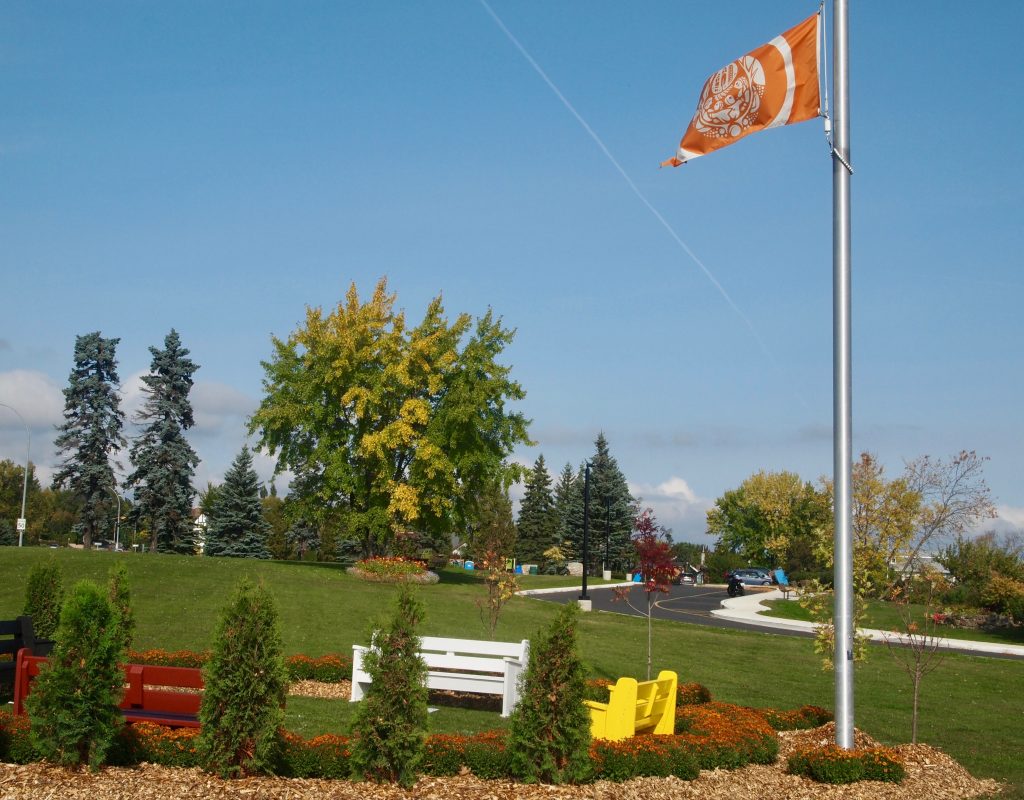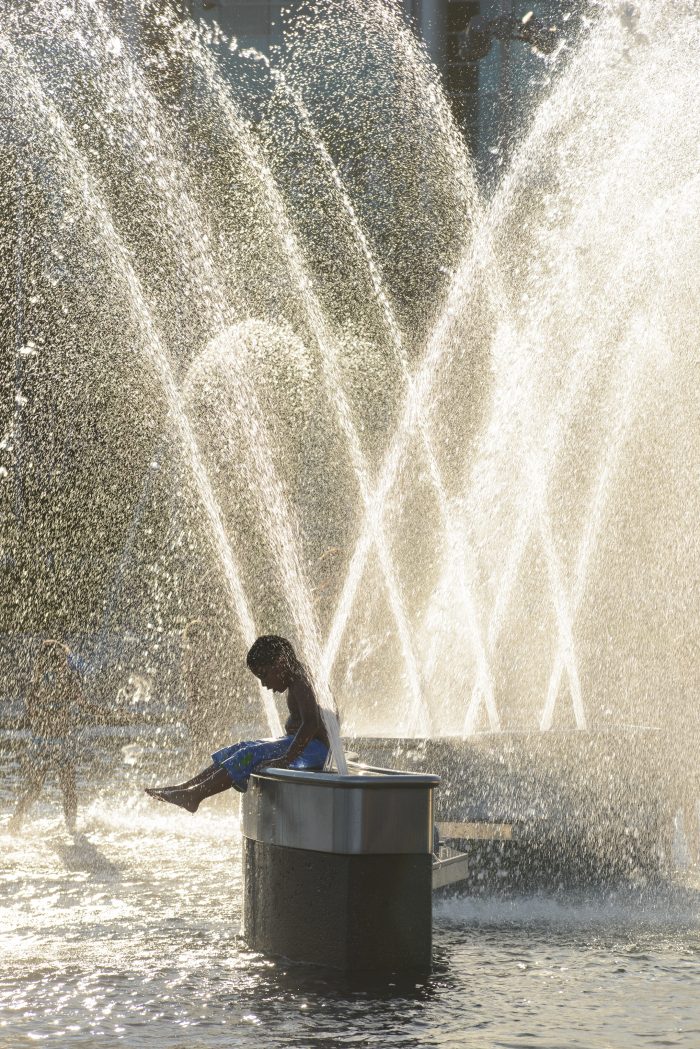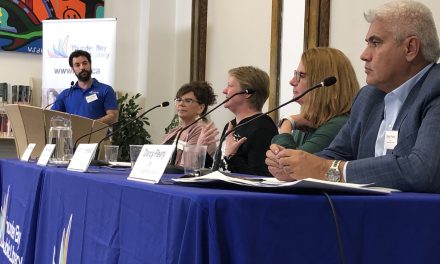National Day for Truth and Reconciliation Ceremony at Hillcrest Park
Story and photos by Sidney Ulakovic
It was a quiet autumn morning as people gathered at Hillcrest Park donning orange shirts, some Indigenous and some settlers, some old and some young, but all present on this day to acknowledge hard truths on the third annual National Day for Truth and Reconciliation. There were around 100 people in attendance at the north-side park, with all encouraged to observe quietly as the opening sacred pipe ceremony and smudge began.
Elders and other dignitaries spoke from inside a new sitting area located alongside the National Centre for Truth and Reconciliation’s official Residential School Survivors flag. They were enclosed by a circle of orange flowers, cedar, and mountain ash that formed a contemplative seating area with four benches, one for each colour of the medicine wheel. While the space was established with today’s annual ceremony in mind, it will have a permanent home at Hillcrest Park next year, as a place for the community to commemorate and honour the survivors of the Residential School system and to acknowledge the thousands of children who died in it, never making it home.

The commemorative sitting area at Hillcrest Park days prior to the National Day for Truth and Reconciliation
Today the space hosted and honoured, among others, Elder Fred Thomas of Lac Seul First Nation, who spoke at the ceremony. Thomas is a McIntosh Residential School survivor and took the opportunity to speak of his experiences and also recognize those who didn’t come home, including six of his aunts. “We’re still numb,” says Thomas. “Even though we’ve talked about it for years, our missing relatives who have gone, [wondering] what happened to them.” Although there is a long way to go in the process of understanding the detriment of these truths, Thomas finds hope in seeing so many young people and children attending today’s ceremony, which he attended with his granddaughter.
While the focus of the day lies on acknowledging hard truths, it is also inherently a celebration of Indigenous resilience and culture that persists after centuries of attempts to demolish it. Elder Sheila DeCorte of Fort William First Nation also spoke, and performed opening and closing songs. “I chose [the song] specifically because the turtle represents truth, and this day is about truth and reconciliation,” DeCorte says of her opening Turtle Song. DeCorte closed with Wildflower Song, which she introduced with a powerful connection to all the children found in mass graves at former Residential Schools across the country, “They didn’t realize when they buried us, we were seeds,” DeCorte says.
As DeCorte sang the Wildflower Song, she invited all those in attendance to join in her song of resistance before everyone paused for a moment of silence and reflected on those hard truths that gathered them there today, one step in the ongoing process of reconciliation.
















